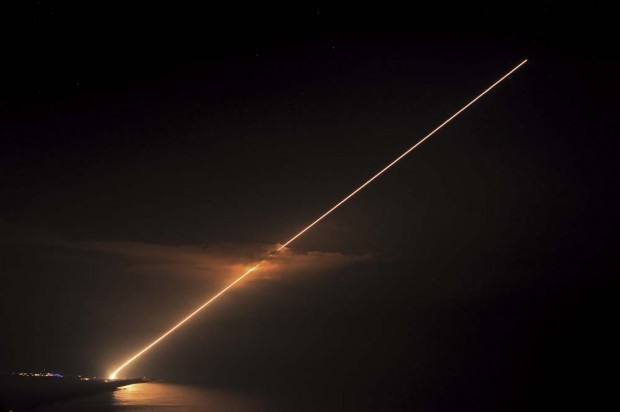LIHUE — Three Kauai legislators said they support the possibility of converting the island’s missile testing facility into a defense system. Reps. Dee Morikawa (D-16) and James Tokioka (D-15) said they are in favor of potentially turning the Pacific Missile
LIHUE — Three Kauai legislators said they support the possibility of converting the island’s missile testing facility into a defense system.
Reps. Dee Morikawa (D-16) and James Tokioka (D-15) said they are in favor of potentially turning the Pacific Missile Range Facility Barking Sands into a missile defense system to protect against threats, such as North Korea.
“We did sign support for the potential of it to be turned into a defense system,” Morikawa said. “Right now, it’s only a testing facility. We’re only able to shoot off testing missiles. That is a possibility because of the threat of Korea.”
Tokioka said Missile Defense Advocacy Alliance, a nonprofit that seeks to generate public support for missile testing and missile defense system, is positioning Hawaii get PMRF operational as a defense system instead of a testing facility.
He said it would take about 20 minutes for a missile fired from North Korea to reach Hawaii.
“If and when North Korea or anyone else shoots a missile to Hawaii, we can shoot it down,” Tokioka said. “What the proponents are doing for missile defense is looking at getting additional missiles at PMRF so that we can defend Hawaii.”
Rep. Derek Kawakami (D-14) said he also supports the idea of having the missile defense system at PMRF.
Senate President Ron Kouchi said he needed more information on the proposal.
Robert Purdy, PMRF public affairs officer, said there are no immediate plans for missile defense conversion.
“PMRF’s main function is as a test and training facility,” he wrote in an email. “Our mission is to facilitate test and training events in a safe and effective environment.”
According to a statement from Missile Defense Advocacy Alliance, using Aegis Ashore (as a defense system) in Kauai would not reduce the PMRF’s capability to continue operating as a testing range since the Aegus Ashore can be used for both testing and emergency operation.
MDAA estimates that it would cost $25 million to operationalize the Aegis Ashore facility on the base.
Congresswoman Tulsi Gabbard — who is also a proponent of installing a missile defense system in Hawaii — recently passed amendments which would require the Missile Defense Agency to initiate planning and design for a new ballistic missile defense radar in Hawaii.
“North Korea’s ongoing pursuit of increased nuclear and missile capabilities are a reminder of the serious threat Hawaii and the U.S. mainland face,” Gabbard said. “Just this week, it was reported that North Korea successfully tested its Musudan missile, further proving their increasing ballistic missile capabilities. We must continue to invest in strengthening our missile defense capabilities to keep our residents safe.”
The House later adopted Gabbard’s amendments to provide $5 million for missile defense in Hawaii and the Asia Pacific.
In May, the Missile Defense Agency successfully tested the tracking capabilities of the Aegis Ballistic Missile Defense System at PMRF.
The system is designed to protect against short to intermediate-range ballistic missiles.
The target test missile fired in May was in the air for about 15 minutes and was detected and tracked from the USS John Paul Jones.
The ship’s on board AN/SPY-1 radar used the Aegis Baseline 9.C1 Weapon System to detect the target.


